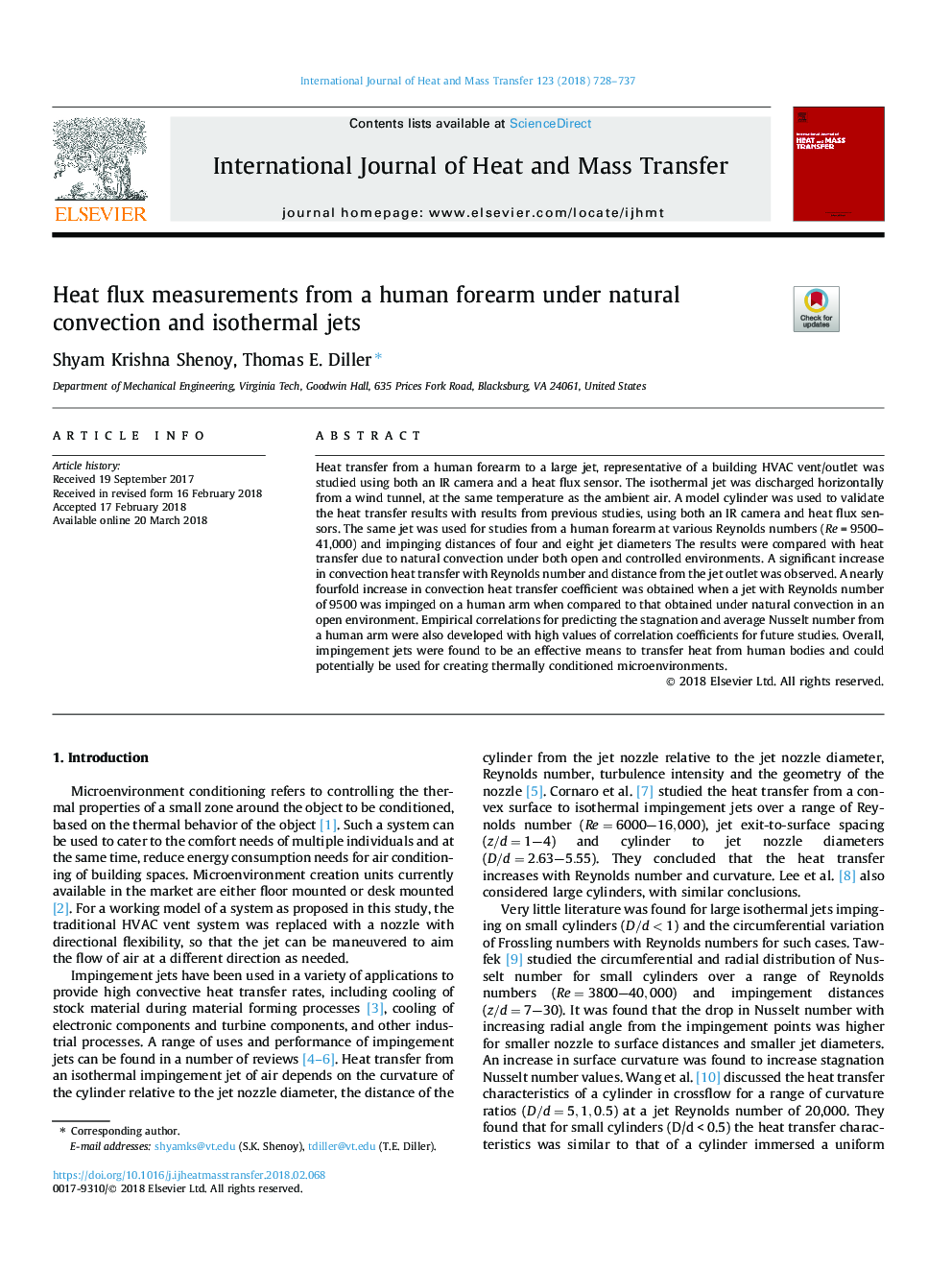| Article ID | Journal | Published Year | Pages | File Type |
|---|---|---|---|---|
| 7054304 | International Journal of Heat and Mass Transfer | 2018 | 10 Pages |
Abstract
Heat transfer from a human forearm to a large jet, representative of a building HVAC vent/outlet was studied using both an IR camera and a heat flux sensor. The isothermal jet was discharged horizontally from a wind tunnel, at the same temperature as the ambient air. A model cylinder was used to validate the heat transfer results with results from previous studies, using both an IR camera and heat flux sensors. The same jet was used for studies from a human forearm at various Reynolds numbers (Reâ¯=â¯9500-41,000) and impinging distances of four and eight jet diameters The results were compared with heat transfer due to natural convection under both open and controlled environments. A significant increase in convection heat transfer with Reynolds number and distance from the jet outlet was observed. A nearly fourfold increase in convection heat transfer coefficient was obtained when a jet with Reynolds number of 9500 was impinged on a human arm when compared to that obtained under natural convection in an open environment. Empirical correlations for predicting the stagnation and average Nusselt number from a human arm were also developed with high values of correlation coefficients for future studies. Overall, impingement jets were found to be an effective means to transfer heat from human bodies and could potentially be used for creating thermally conditioned microenvironments.
Related Topics
Physical Sciences and Engineering
Chemical Engineering
Fluid Flow and Transfer Processes
Authors
Shyam Krishna Shenoy, Thomas E. Diller,
